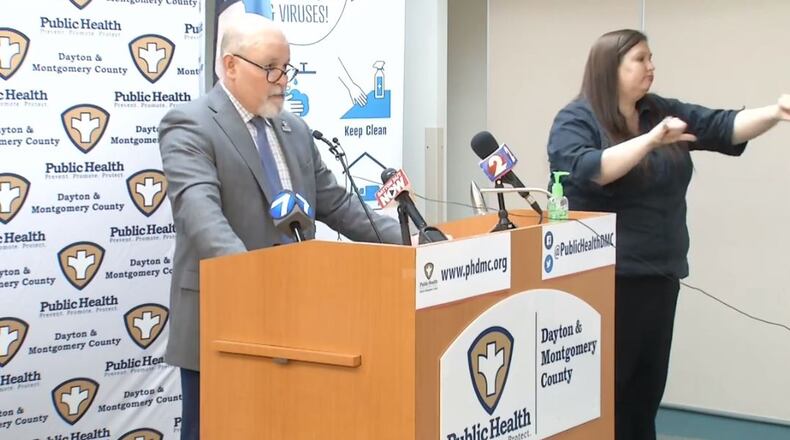There are 30 Butler County confirmed cases, three in Champaign, six in Clark, 12 in Darke, four in Greene, 46 in Miami, 35 in Montgomery, one in Preble, and 20 in Warren, according to the latest update from Ohio Department of Health as well as some additional cases recently recorded by county officials.
MORE: Coronavirus in nursing homes: ‘We are going to see deaths’
Dayton Mayor Nan Whaley reminded residents about the importance of keeping a physical distance between each other and staying home.
“It saves lives and that’s what you’re doing when you are making the decision for your community and for your state and for your country to stay home,” Whaley said.
Public health officials in Miami County reported the fifth and sixth deaths associated from COVID-19, the disease caused by coronavirus.
Both people who died had lived at nursing homes where the virus has spread to residents and workers.
The two who died were an 85-year-old man who lived at SpringMeade Health Center in Tipp City and an 85-year-old woman who lived at Koester Pavilion in Troy.
State officials now say Miami County has 46 positive COVID-19 cases and 16 hospitalizations. Of the 46 cases, 22 are women and 24 are men.
Coronavirus: Complete Coverage
Montgomery County has its first death and now has 35 confirmed coronavirus cases.
There are 20 woman and 15 men who have tested positive for COVID-19, with five who are hospitalized, Health Commissioner Jeff Cooper, Public Health - Dayton & Montgomery County said Monday.
“Our main concern as well is that health care workers are also being exposed to this virus. And they’re essentially our last means here to stop the spread of this virus. They have to be healthy, they have to be present,” Cooper said. “Because we’re anticipating a surge in the next several weeks, we have to keep our health care workers healthy and safe.”
Cooper would not release any further information about the death. However, the patient who died was a man 80 or older, according to Ohio Department of Health data.
In Darke County, a 76-year-old man, who officials did not identify, tested positive for COVID-19 and has died.
The county has 13 confirmed cases, with 10 associated with a nursing home, Greenville Health and Rehabilitation. The additional three cases are unrelated to the nursing home and each other.
Greene County officials reported Monday the first death from the virus in the county, an 87-year-old woman from Cedarville. This is the fourth confirmed case in the county.
She fell ill in her home around March 21 and was hospitalized on March 24 when her symptoms worsened. She was tested on March 25 through Lab Corp and passed away on March 26. Results of the test were reported to Greene County Public Health Monday.
Coronavirus: This Ohio innovation is capturing the nation’s attention
All those involved in her care were wearing full personal protective equipment, health officials said, and there is no travel history or long-term care facility associated with this case.
Greene County Public Health stressed in a statement that “it is everyone’s responsibility to protect the health of our seniors, those with underlying health conditions, healthcare workers and first responders.”
Public Health - Dayton & Montgomery County said Monday it has received calls, mainly from employees, regarding about 250 workplaces.
Cooper said each businesses has been ordered to submit by the end of day Wednesday information that they meet the definition of an essential operation. They also must provide documentation on how they comply with social distancing to keep workers safe, including enhanced cleaning, expanded sick leave and allow employees to work from home as much as possible.
Public Health workers, which will have identification and an emergency response vest, will visit all 250 businesses to ensure compliance, Cooper said.
About the Author
